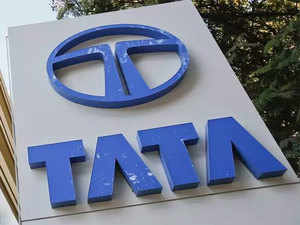 Agencies
AgenciesThe company will initially focus on breaking down the wholly-owned subsidiaries to be part of the main operational businesses and will later look at joint ventures, a top official close to the development said. Tata Power will seek shareholders’ approval for the restructuring which will take several months, he said, adding the company may keep the subsidiaries to less than 20.
An email sent to the company remained unanswered till the time of going to press.
Tata Power has around 50 subsidiaries (40 are wholly-owned), 37 JVs and 8 associates. “Many of these companies were created because of a legal requirement then. The move is part of Tata Son’s larger strategy to shrink over 1,000-odd subsidiaries owned by the Tata Group’s operating companies to a manageable number,” said a person close to the matter.
While several of the subsidiaries will be made part of the main structure to avoid duality in costs, some may be retained according to the legal requirements. “All these companies have a separate board of directors and a cost structure built around it. Going ahead, it is not feasible to have such an unwieldy structure to be profitable,” an official said on the condition of anonymity.

Tata Power has a presence in all segments of the power sector such as fuel & logistics, generation (thermal, hydro, solar and wind), transmission, distribution and trading. It has public-private partnerships in generation, transmission and distribution in India.
In a presentation in February this year, the company said that as part of its deleveraging plan, it has finalised Rs 4700 crore worth of divestments and has realised Rs 2,500 crore worth considerations. In the first nine months of 2018-19, it has already taken out Rs 3,200 crore from proceeds received from Tata Communications stake sale, realization from sale of Arutmin, its Indonesian coal subsidiary, and dividend from coal companies. Options to monetize other assets are under consideration. The company will focus on few but important growth areas and evaluate exiting sub-scale assets/non-core investments, which will help it to respond and react faster and bring agility.
Post monetisation, Tata Power’s leverage ratios have improved. The net debt to EBIDTA ratio has improved to 6.8 post monetisation from 7.4 in the end of FY18. This ratio helps in understanding the company’s ability to meet the debt obligations; anything above 4 is risky. Its consolidated net debt is near Rs 46,000 crore.
In FY18, it had revenues of Rs 26,840 crore, down 2.7%, and made an adjusted net profit of Rs 1,563 crore, up 20%. This was due to higher contribution by coal mines, renewables business and associates, lower foreign exchange losses.
However, it has been struggling with losses at its Mundra Ultra Mega Power project in Gujarat for the past several years as it has been unable to pass on the coal costs, but this has been offset by its Indonesian coal business. In 2018, it reported a loss of Rs 1,400 crore at Mundra and a net profit of Rs 1,400 crore in its coal businesses. These two businesses account for almost 60% of the company’s total revenues.
For FY19, the country's largest integrated power company reported a 6.5 % decline in consolidated net profit at Rs 2,440.41 crore for the financial year ended March 31, 2019, compared with Rs 2,610.85 crore in the last fiscal, due to lower realisations from coal companies. Consolidated revenue rose 10% to Rs 29,558.64 crore in FY19 from Rs 26,840.27 crore in the previous year.
Download The Economic Times News App to get Daily Market Updates & Live Business News.
Read More News on
Download The Economic Times News App to get Daily Market Updates & Live Business News.









 Get Unlimited Access to The Economic Times
Get Unlimited Access to The Economic Times
